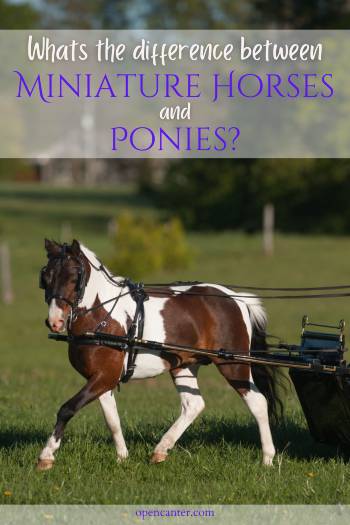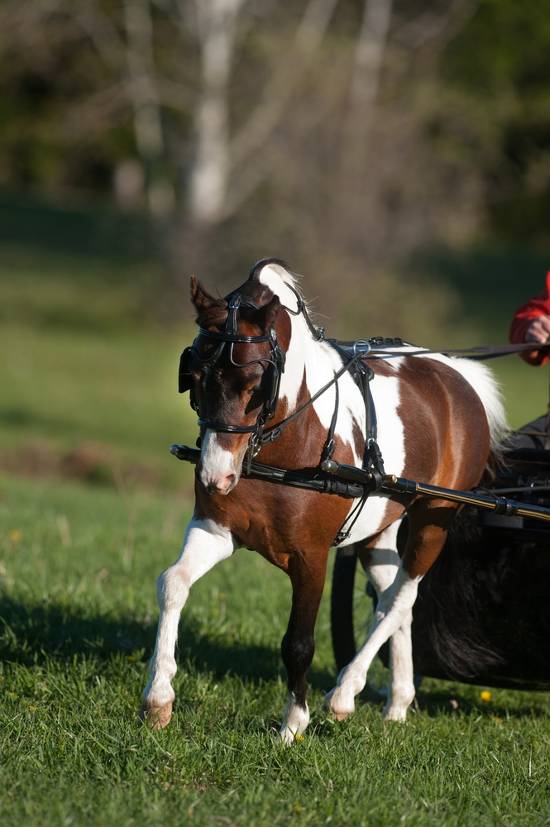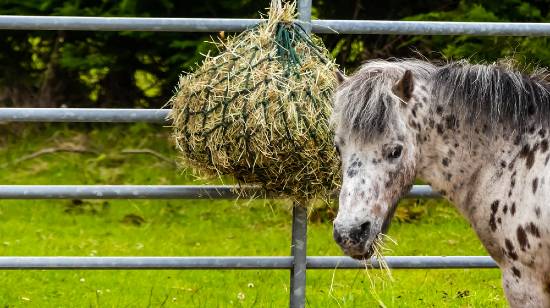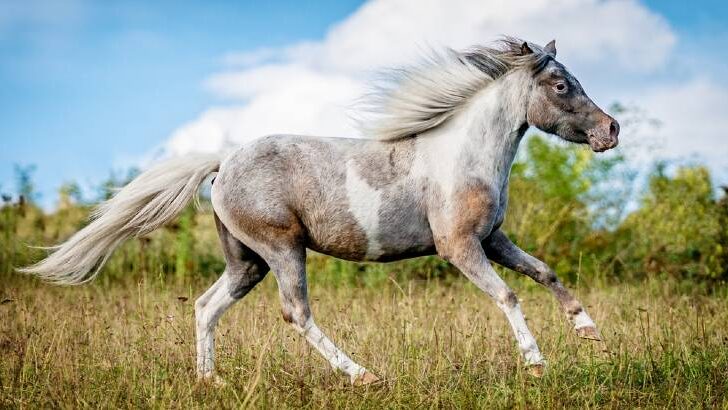Affiliate Disclaimer
As an Amazon Associate I earn from qualifying purchases. It helps me keep the website going. Thank you for your support.
There is nothing cuter than a little pony, with bright eyes peeping out from underneath a giant fluffy forelock. There is just something about these pint-size equines that unites horse lovers across the world in awe. But in a comparison between miniature horses versus ponies, what sets them apart?
Miniature horses and ponies are both small equine breeds. Comparing miniature horses versus ponies uncovers a wide array of differences and similarities. This is what makes each type unique and able to be identified. Very small ponies and miniature horses, while very similar, are definitely different.
Both ponies and miniature horses are very popular with many horse enthusiasts. Their popularity is likely due to their small size – they can often be easier to handle and keep. Read on to learn more about the difference between miniature horses and ponies.

Is There A Difference Between What Miniature Horses and Ponies Look Like?
In short, yes there is a visual difference between miniature horses and ponies. Sometimes these differences can be very easy to spot. Other times, the differences are only very subtle. How obvious the differences are depends on the breeding of the two equines you are comparing.
For starters, ponies tend to be stockier than miniature horses. Miniature horses are bred to be just that: a miniature version of a horse. Miniature horses should show the same conformation and body proportions as large horses. Their features are quite refined, and they should not be overly stocky.

On the other hand, most pony breeds are designed to be quite stocky. They tend to carry more muscle and fat. They also have coarser manes and tails and thicker coats. The structure of their legs tends towards strength rather than beauty. Some breeds tend to have quite short legs when compared to their body.

Miniature horses appear quite dainty in comparison. This is because horses tend to have more refined features than ponies. This is due to their role in history as carriage, riding, pleasure, and sport horses. Ponies tended to be used more for work purposes, and they were bred for strength and reliability.
All this being said; there are some pony breeds that are quite refined. An example of this is the Riding Pony breed. These ponies were produced by crossing smaller Thoroughbreds and Arabians with ponies. The end result is a pony with much more refined and dainty conformation; popular for showing.
Did Miniature Horses Originate From Ponies?
The historical origins of miniature horses versus ponies also differ. Miniature horses originated from Shetland ponies, back in the coal mine days. In 1847, when children were banned from working in the mines, the demand for small ponies to replace them skyrocketed.
These ponies had to be very small. Over time, their prevalence became more widespread as people continued to breed them. By the 1960s, there were many breeders focussing on breeding miniature-sized Shetland ponies.
As the height is reduced, the features and conformation become more refined. It soon became clear that a way was needed to differentiate between Shetland ponies and their miniature version. So, in 1971, the American Miniature Horse Registry was founded.
Guidelines were set up so that only eligible horses could be registered. One of the most important guidelines was height – horses had to be under 34 inches. This has since been expanded in 1986 to include horses up to 38 inches. (source)
When it comes to the origins of ponies, each specific breed will have its own tale to tell. It’s believed the first ponies were domesticated from the wild population in Northern Europe and Asia. Their small size is a result of tough living conditions and a lack of abundant grazing. (source)
However, this contributed to their resilience. It also explains some of the common features we see in ponies today; such as their stockier build and coarser hair. These original horses were bred, and used for farm work and transport.
Selective breeding is what has created the multitude of pony breeds we see today. Over time, other breeds have been crossed with pony breeds. For example, introducing Arabian blood created a more refined pony. Continually crossing small ponies with each other kept the genes for short height alive.
Are Ponies Taller Than Miniature Horses?
Yes, most ponies are taller than miniature horses. Miniature horses typically stand between 34 to 38 inches at the withers. They are very small! The term ‘pony’ refers to a variety of different breeds. Ponies can range from being the same height as a miniature horse, up to 14.2hh or 58 inches at the withers.
An interesting difference between miniature horses and ponies is the unit of measurement for their height. Miniature horses are always measured in inches. Ponies are always measured in hands. Both are always measured at the same place: the highest point at the wither.
The reason for this is simply because miniature horses are so small. It can be hard to determine an accurate height measurement if you are working in hands. A hand converts to approximately four inches.
Often, miniature horses are registered with a breed society. In order for your miniature horse to be eligible, they must meet the height requirements. Sometimes, eligibility can come down to a quarter of an inch! This is why it is important to be accurate.
While this accuracy is important for ponies, their classification is not within such a small range. This is why ponies are most commonly measured in hands. Using hands as a measurement stems back to Ancient Rome. (source)
Miniature Horses Vs. Ponies: Which Are More Versatile?
The typical purposes for which miniature horses and ponies are kept usually differ. This is because, due to their size, miniature horses are unable to be ridden. The exception to this is if the rider was a small child.
Instead, miniature horses are usually kept as pets, companion or therapy animals, or show horses. Their small size makes keeping them more manageable as they require less space. Additionally, most shows offer breed classes specifically for miniature horses.
Some miniature horses are also broken to harness and used as carriage horses. However, because of their size, they can only pull very light loads. Others are used as sport horses; but without riders. There are shows that involve obstacle courses and show jumping, with the handler leading the horse instead of riding.

Ponies can also be kept for these purposes. However, they are much more likely to be used for riding, due to the larger height range. Ponies are a very popular option as mounts for children and small adults.
Ponies are often sturdier, and their build is better equipped to cope with carrying the weight of a rider. Additionally, they are much better equipped to be broken to harness, as they have more strength.
Both miniature horses and ponies are very versatile. They are easily trained for various activities. However, miniature horses and small ponies have a limiting factor. Their small height means that they are unable to be ridden or suitable for driving.
However, their smaller height makes them easier to handle than their larger counterparts. Children often feel much safer, and they can’t as easily overpower adults. However, good training also plays a huge role in this. Just because they are small, does not mean that they can’t cause injury!
Do Miniature Horses Have Similar Temperaments To Ponies?
Both miniature horses and ponies share similar temperaments. For starters, they are social animals, just like any other equine. They thrive when kept in pairs or small groups with other horses or ponies. Failing other equine company, a companion such as a goat or sheep can keep them happy.
Both miniature horses and ponies are renowned for their cheeky and outgoing temperaments. They tend to be more resilient than their larger equine counterparts. This likely stems again from their wild pony ancestors. These wild ponies had to be resourceful in order to survive.
This may be what causes the extra cheekiness! While there are always exceptions to the rule, ponies tend to test the boundaries more than horses do. It does not take long for a pony to learn that they have outsmarted their rider!
Miniature horses carry the same cheeky tendencies. If not trained properly, they will quickly learn to nip, bite or kick. While this might not seem overly harmful, due to their size, they can still cause serious injury!
Both miniature horses and ponies are also more commonly seen as stubborn. They are also often more docile and curious than larger horses. Once again, this likely stems back to their resourceful wild ancestors.
Miniature Horses Versus Ponies – Breed or Category?
One of the key differences between miniature horses and ponies is their breeding. Miniature horses are a distinct breed of horse. They are selectively bred for their small size and refined traits that are desired for the breed.
The term ‘pony’ refers to a category that contains equines that are under 14.2hh in height. This category can contain many different breeds, most of which include ‘pony’ in their name. Examples include the Riding Pony, Welsh Mountain Pony, and the Shetland Pony.

However, this is where things can get confusing. There are some breeds that fit within the pony category, but that include ‘horse’ in the breed’s name. Miniature horses are the prime example! Another example is the Icelandic Horse, which generally does not mature taller than 13.2hh.
There is a reason behind the breed names. Miniature horses are called just that because they are designed to look more like tiny horses than ponies. The Icelandic Horse breed name stems from history. There was no word in the Icelandic language for ‘pony’. The breed’s name simply comes from their word for ‘horse’. (source)
The term ‘pony’ doesn’t have any other specific traits, other than the requirement to be under 14.2hh. However, typically ponies have a stockier build and coarser manes and tails. On the other hand, there is a list of specific traits that Miniature horse breeding targets.
Do Ponies Eat The Same Things As Miniature Horses?
Another point of similarity between miniature horses and ponies is their ideal diet. For the most part, it is the same as every other equine on the planet. They require plenty of roughage, in the form of grass or hay. This is what helps to keep the gut functioning properly.
They also require the same range of vitamins and minerals. If their diet is lacking, they may also require a special concentrate or pre-mixed feed. Albeit, all of these things are fed in proportion to their size. They do not eat anywhere near as much as a 16.2hh thoroughbred!
The interesting thing to note is that both ponies and miniature horses are especially susceptible to obesity. It is very easy to over-feed them, and this can cause a range of health problems. Often only small changes in weight can cause big problems.

Their sensitivity to feed likely stems from their wild ancestors. Miniature horses originated from the same place that ponies did. These wild ponies had evolved to cope with poor-quality pasture in low amounts. Their metabolism is designed to maintain their weight with very little intake.
This means that their weight must be monitored very closely. Both miniature horses and ponies are very susceptible to developing weight-related illnesses. These include laminitis and founder, insulin resistance, and equine metabolic syndrome.
All of these diseases can cause irreversible damage. Prevention is much better than a cure. In some extreme cases, these diseases can result in the death or euthanasia of the horse or pony.
Final Thoughts
While miniature horses and ponies are both small equines, there are key differences between the two. These lie in their specific breeds, size ranges, and purposes. Comparing miniature horses versus ponies highlights the fact that miniature horses are a specific breed. This differs from ponies, which is a category of small equines containing a variety of breeds – all under 14.2hh!




